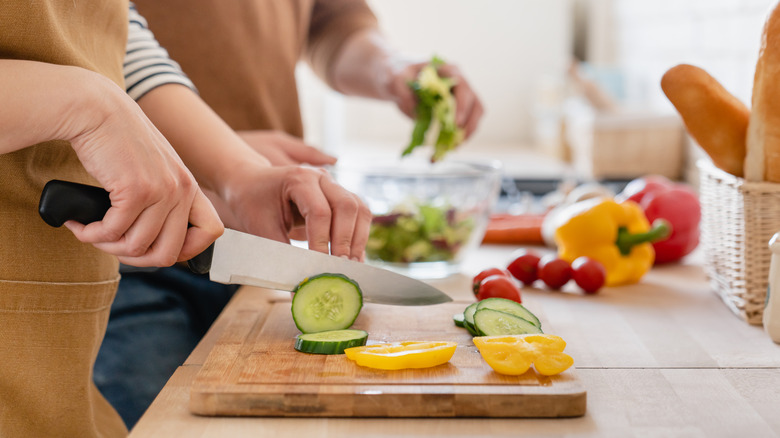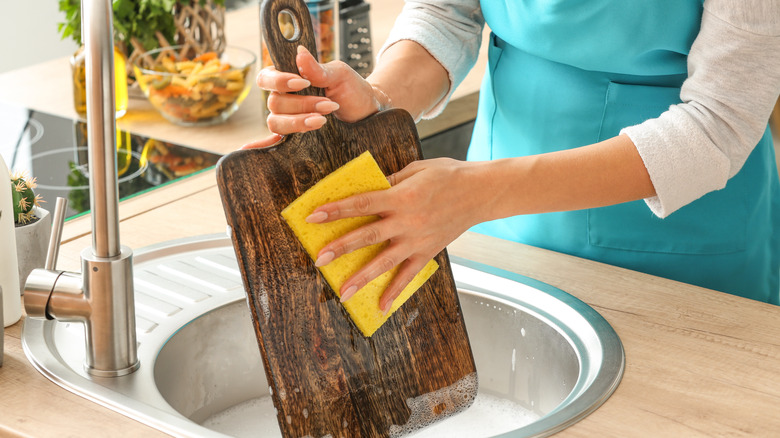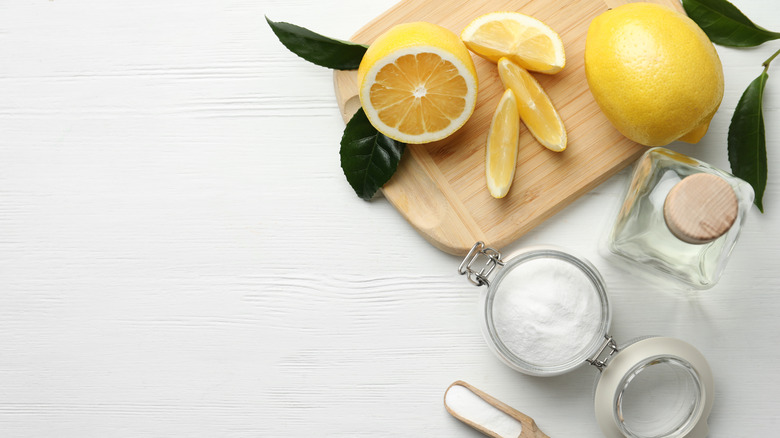How Often Should You Really Be Deep Cleaning Your Cutting Boards?
Washing your cutting boards is essential, but did you know you need to deep clean them too? About once a month, you should set extra time aside to really scrub off the germs from your cutting boards. If you don't clean them regularly, you risk giving yourself and your family food poisoning. If you can believe it, the University of Arizona conducted a study showing that the average cutting board is dirtier than a toilet seat. The boards had 200 times more fecal bacteria growing in their knife grooves than a toilet.
Every time you use a cutting board, your knife leaves a slice mark on it. Over time the cuts become deeper until you replace the board with a new one. In the meantime, as you continue to use the board filled with grooves, bacteria from raw animal products settle into the tiny spaces and multiply. You need to regularly sanitize your cutting boards to prevent germs from growing and infecting your food. Then you can take it a step further with a deep clean. You should clean, sanitize, remove stains, and smooth the knife cuts during this time.
Deep clean every few weeks to a month
Every time you use a cutting board, it needs to be washed, but this step only removes food particles and bacteria. You can do this with a kitchen sponge, dish soap, and hot water. It needs to be sanitized whenever you use it to cut raw animal products. Dishwashers are perfect for this because they use appropriately hot water (at least 171 degrees Fahrenheit) to kill pathogens. The monthly deep cleaning is separate from these and it will help keep your cutting board spotless so you can make it last as long as possible.
Even if you're washing your cutting boards daily, you can't forget to deep clean them when necessary. There isn't an exact time that's accurate for everyone's kitchen, but the average cutting board needs a thorough cleaning at least once a month. If you use the board frequently, you may need to deep clean it every few weeks. Once you notice stains developing, it's time to wash it. And if it has a sour smell, you've waited too long.
The best way to deep clean cutting boards
How you deep clean your cutting boards depends on what material they're made from. Wood cutting boards can't go in the dishwasher; instead, you can disinfect them with a bleach solution made from 1 teaspoon of bleach mixed with 1 quart of water. First, wash the wood with soapy water. Then use a sponge to wipe it down with the bleach mixture, making sure to reach every crevice. Once it's thoroughly rinsed off with hot water, you can focus on removing any stains. Sprinkle 1 cup of baking powder and 1 cup of distilled white vinegar over your cutting board. Let it sit for a few minutes before rinsing it off with water. Lastly, treating the wood with food-grade mineral oil will keep it in pristine condition.
Plastic cutting boards are easier to care for since you can put them in the dishwasher. If you don't have a dishwasher, you can wash and disinfect the plastic by hand with the same steps as above. To remove stains from your plastic cutting board, make a paste from equal parts baking soda, salt, and water. Scrub it into the cutting board and let it sit for a few minutes before rinsing it off. If any pieces of plastic are sticking up, you can smooth them away with a steel scouring pad. Simply scrub your cutting board with the metal until nothing is left sticking up, and wash it with warm soapy water.


